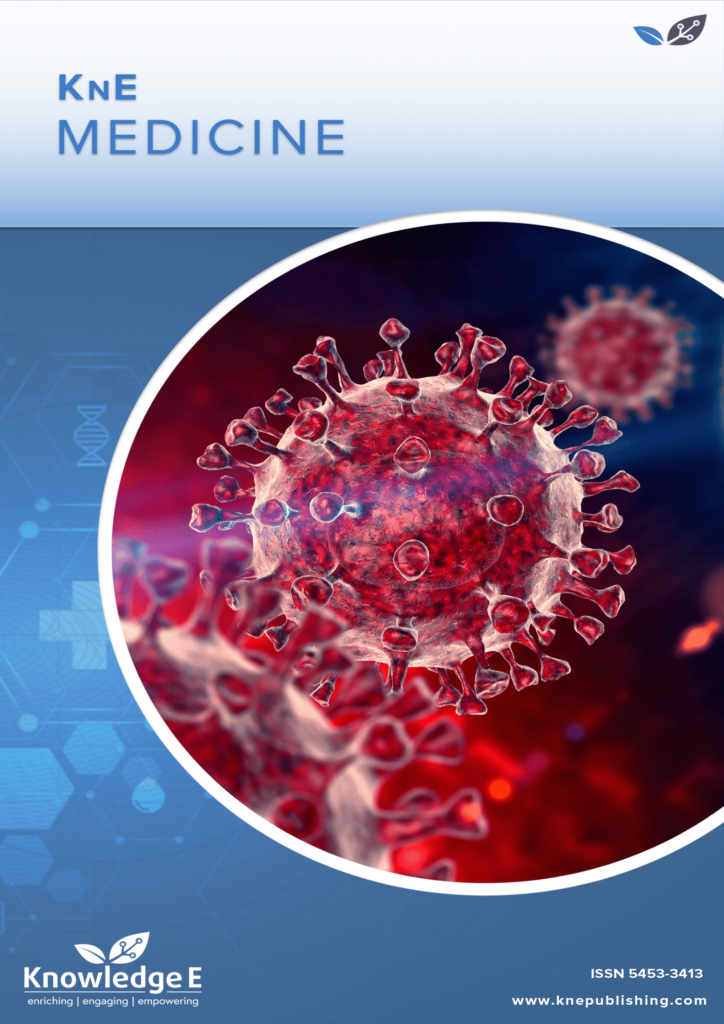
KnE Medicine
ISSN: 2519-125X
The latest conference proceedings on all fields of medicine.
Pain Experience After Caesarean Section: A Qualitative Study
Published date: Sep 15 2022
Journal Title: KnE Medicine
Issue title: The International Conference of Medicine and Health (ICMEDH)
Pages: 719–729
Authors:
Abstract:
Pain is a sensory experience that is most often felt by a person when experiencing an injury. Pain is classified as a positive sensory disturbance. In essence, pain cannot be interpreted and cannot be measured, but it cannot be denied that pain is an unpleasant feeling. Caesarean section surgery performed on the mother has a side effect of pain that occurs due to network connectivity and surgery. The purpose of this study was to describe the pain experience of patients after their caesarean section. In this study, three themes were obtained, namely: 1) pain experiences; 2) disturbed sleep patterns; and 3) causes of caesarean section. From this study it is hoped that mothers can share their experiences of pain.
Keywords: pain, experience, caesarian section
References:
[1] N.P. Wardani, Manajemen Nyeri Akut. , Denpasar, 2014.
[2] S.N. Raja, D.B. Carr, M. Cohen, et al., “The revised International Association for the Study of Pain definition of pain: concepts, challenges, and compromises.,” Pain. vol. 161, no. 9, pp. 1976–1982, 2020.
[3] A.R. Sulistianingsih, “Peluang Menggunakan Metode Sesar Pada Persalinan Di Indonesia.,” Jurnal Kesehatan Reproduksi. vol. 9, no. 2, p. 3, 2018.
[4] S. Rini and I.H. Susanti, “Penurunan nyeri pada ibu post sectio caesaria pasca intervensi biologic nurturing baby led feeding.,” Medisains. vol. 16, no. 2, p. 83, 2018.
[5] C. Yuniwati, “Efektivitas Teknik Relaksasi Pernapasan dan Teknik Foot and Hand Massage Pada Pasien Pasca Persalinan Sectio Caesarea (SC) di RSUD Langsa, Aceh.,” Indonesian Journal for Health Sciences; Vol 3, No 1 (2019): MarchDO - 10.24269/ijhs.v3i1.1611. p. 2019.
[6] R.H. Dworkin, A.B. O’Connor, J. Audette, et al., “Recommendations for the pharmacological management of neuropathic pain: an overview and literature update.,” Mayo Clinic proceedings. vol. 85, no. 3 Suppl, pp. S3–S14, 2010.
[7] K.-H. Kim, H.-J. Seo, S. Abdi, and B. Huh, “All about pain pharmacology: what pain
physicians should know.,” The Korean journal of pain. vol. 33, no. 2, pp. 108–120, 2020.
[8] A.H. Ahmad and R. Zakaria, “Pain in Times of Stress.,” The Malaysian journal of medical sciences : MJMS. vol. 22, no. Spec Issue, pp. 52–61, 2015.
[9] P.H. Finan, B.R. Goodin, and M.T. Smith, “The association of sleep and pain: an update and a path forward.,” The journal of pain. vol. 14, no. 12, pp. 1539–1552, 2013.
[10] D. Whibley, N. AlKandari, K. Kristensen, et al., “Sleep and Pain: A Systematic Review of Studies of Mediation.,” The Clinical journal of pain. vol. 35, no. 6, pp. 544–558, 2019.
[11] M.R. Gunawan, “Faktor-faktor Yang Berhubungan Dengan Gangguan Pola Tidur Pada RSUD Dr . H . Abdul Moelok Provinsi Lampung.,” Jurnal Kesehatan Holistik (The Journal of Holistic Healthcare). vol. 10, no. 4, pp. 1–4, 2016.
[12] A.K. Woo, “Depression and Anxiety in Pain.,” Reviews in pain. vol. 4, no. 1, pp. 8–12, 2010.
[13] E.W. de Heer, M.M.J.G. Gerrits, A.T.F. Beekman, et al., “The association of depression and anxiety with pain: a study from NESDA.,” PloS one. vol. 9, no. 10, pp. e106907– e106907, 2014.
[14] J. Jin, L. Peng, Q. Chen, et al., “Prevalence and risk factors for chronic pain following cesarean section: a prospective study.,” BMC anesthesiology. vol. 16, no. 1, p. 99, 2016.
[15] S. Gizzo, A. Andrisani, M. Noventa, et al., “Caesarean Section: Could Different Transverse Abdominal Incision Techniques Influence Postpartum Pain and Subsequent Quality of Life? A Systematic Review.,” PLOS ONE. vol. 10, no. 2, p. e0114190, 2015.
[16] D. Marfuah, N. Nurhayati, A. Mutiar, M. Sumiati, and R. Mardiani, “Pain Intensity among Women with Post-Caesarean Section: A Descriptive Study.,” KnE Life Sciences. vol. 2019, pp. 657–663, 2019.
[17] K.I. Tazkiyah and Yanti, “Pengaruh Teknik Massage Terhadap Pengurangan Nyeri Persalinan Kala I Fase Aktif.,” Jurnal Kebidanan. vol. VI, no. 01, pp. 1–10, 2014.